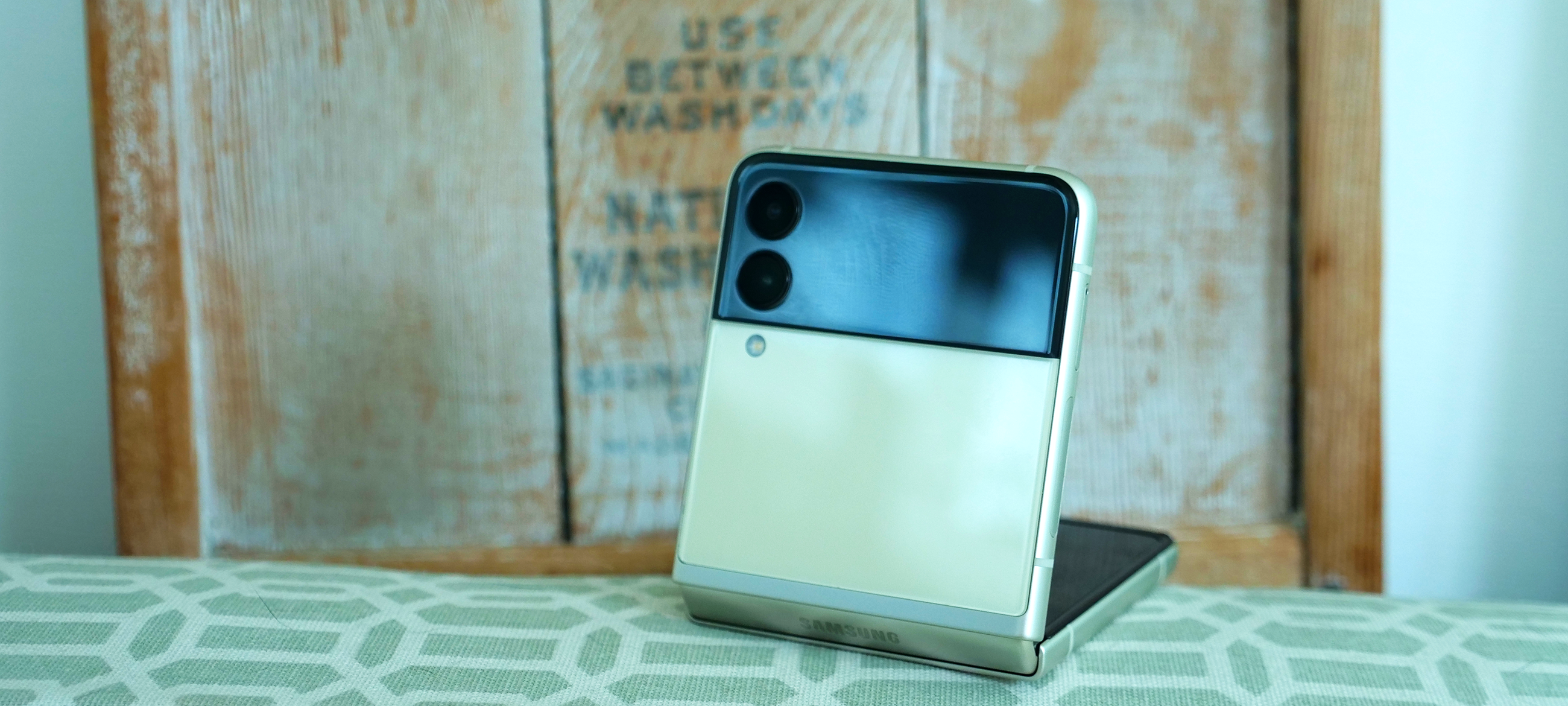Laptop Mag Verdict
The Samsung Galaxy Z Flip 3 delivers flagship performance in a foldable phone for under $1,000 but one significant flaw holds it back.
Pros
- +
Unique and stunning design
- +
Bright, vivid 120Hz display
- +
Excellent camera performance
- +
IPX8 water resistance
- +
Affordably priced
Cons
- -
Terrible battery life
- -
Lacks telephoto
Why you can trust Laptop Mag
Price: $999
OS: Android 11 with One UI 3.1
Display: 6.7-inch FHD+ (2,640 x 1080) 120Hz Super AMOLED
CPU: Qualcomm Snapdragon 888
RAM: 8GB
Rear cameras: 12MP wide (ƒ/1.8); 12MP ultra-wide (f/2.2)
Front camera: 10MP (f/2.4)
Storage: 128 or 256GB
Battery: 5:43 (adaptive 120Hz); 6:00 (60Hz)
Size: 6.5 x 2.8 x 0.27 inches (open); 3.4 x 2.8 x 0.63 (closed)
Weight: 6.5 ounces
Last year, Samsung’s Galaxy Z Flip 5G proved that even smaller foldables don’t have to give up flagship-level performance. The problem was that achieving this required a $1,449 starting price for specs that were otherwise equivalent to Samsung’s $999 Galaxy S20.
When the Galaxy S21 lineup launched in January starting at $799, it made the Galaxy Z Flip 5G price sound even more outlandish. Samsung quickly dropped it to $1,199 and most hoped the Galaxy Z Flip 3 would launch near that discounted price. Samsung blew everyone away when it announced the Galaxy Z Flip 3 starts at $999.
That sub-$1,000 price is a game-changer but Samsung didn’t just slash the cost and send out slightly upgraded hardware. A top-of-the-line Snapdragon 888 processor, IPX8 water resistance, improved cover display, and 120Hz interior display make this a far more compelling phone than the Galaxy Z Flip 5G.
These features, along with the unique form factor, make the Samsung Galaxy Z Flip 3 one of the best phones available today, but there is one critical flaw holding it back. Read on for our take on whether it is a trade-off worth making.
Samsung Galaxy Z Flip 3 price and configurations
The Samsung Galaxy Z Flip 3 is available in two configurations for $999 or $1,049. Both feature a Snapdragon 888, 8GB of RAM, and 5G support with storage of 128GB or 256GB as the only differentiator.
The 128GB model has seven available colors that might make for a tougher choice. At retail stores and wireless carriers, you'll find the Cream, Phantom Black, Green, and Lavender finishes. The 256GB only comes in Phantom Black at retailers. If you shop on Samsung.com, you can also get either model in Gray, White, or Pink, but be prepared for a wait. At the time of writing, shipping is 5-6 weeks out for those colors.
Samsung managed a minor miracle by giving the Z Flip 3 a$450 price drop from its predecessor. That alone is remarkable, but what makes this remarkable are the dramatic improvements to the hardware. Sure, $999 is still far from budget phone territory, but the “foldable tax” is almost gone.
Sign up to receive The Snapshot, a free special dispatch from Laptop Mag, in your inbox.
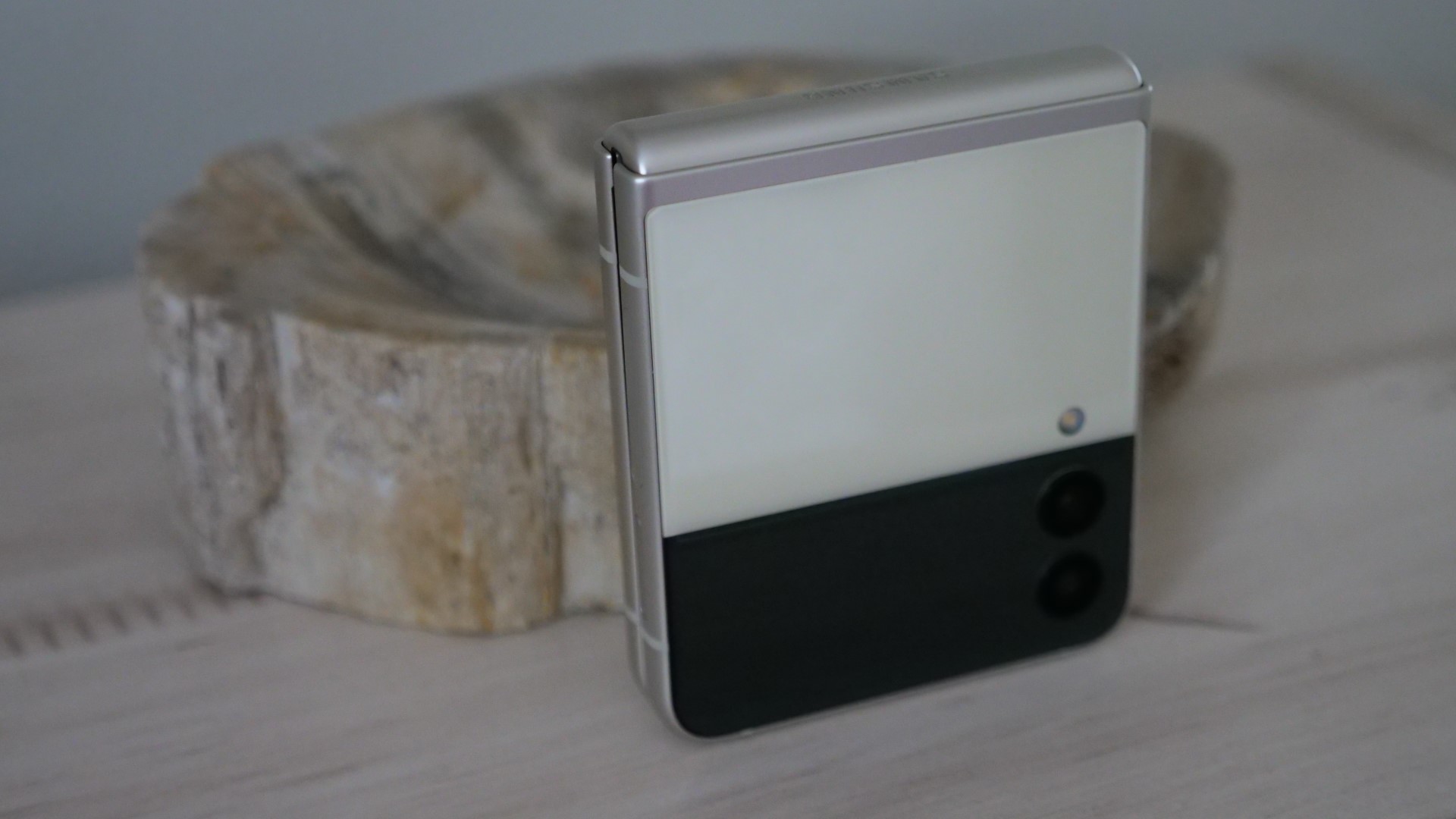
Samsung Galaxy Z Flip 3 design
The Samsung Galaxy Z Flip 3 design isn’t the same quantum leap into the future we saw with the Galaxy Z Fold 2 over its predecessor, but oh boy is it close. The changes are smaller, but this still feels like going from a prototype to something ready to hit the market.
By far the most notable change is to the cover display, which was dwarfed by a postage stamp on the Galaxy Z Flip 5G and now dominates the top third of the phone. It is superior from both an aesthetic and usability standpoint. The new two-tone look shared by all of the Galaxy Z Flip 3 models makes the display seamlessly blend into the top section.
The biggest durability improvement is the inclusion of an IPX8 water resistance certification, indicating that the phone will survive up to 30 minutes in five feet of water. Samsung has also clad the frame in what it calls Armor Aluminum, which should help it handle a drop, and the exterior display is now made from the latest Gorilla Glass Victus to avoid any scratches. The phone has a more robust feel than the previous model with the aluminum frame and hinge updates eliminating any flimsiness.
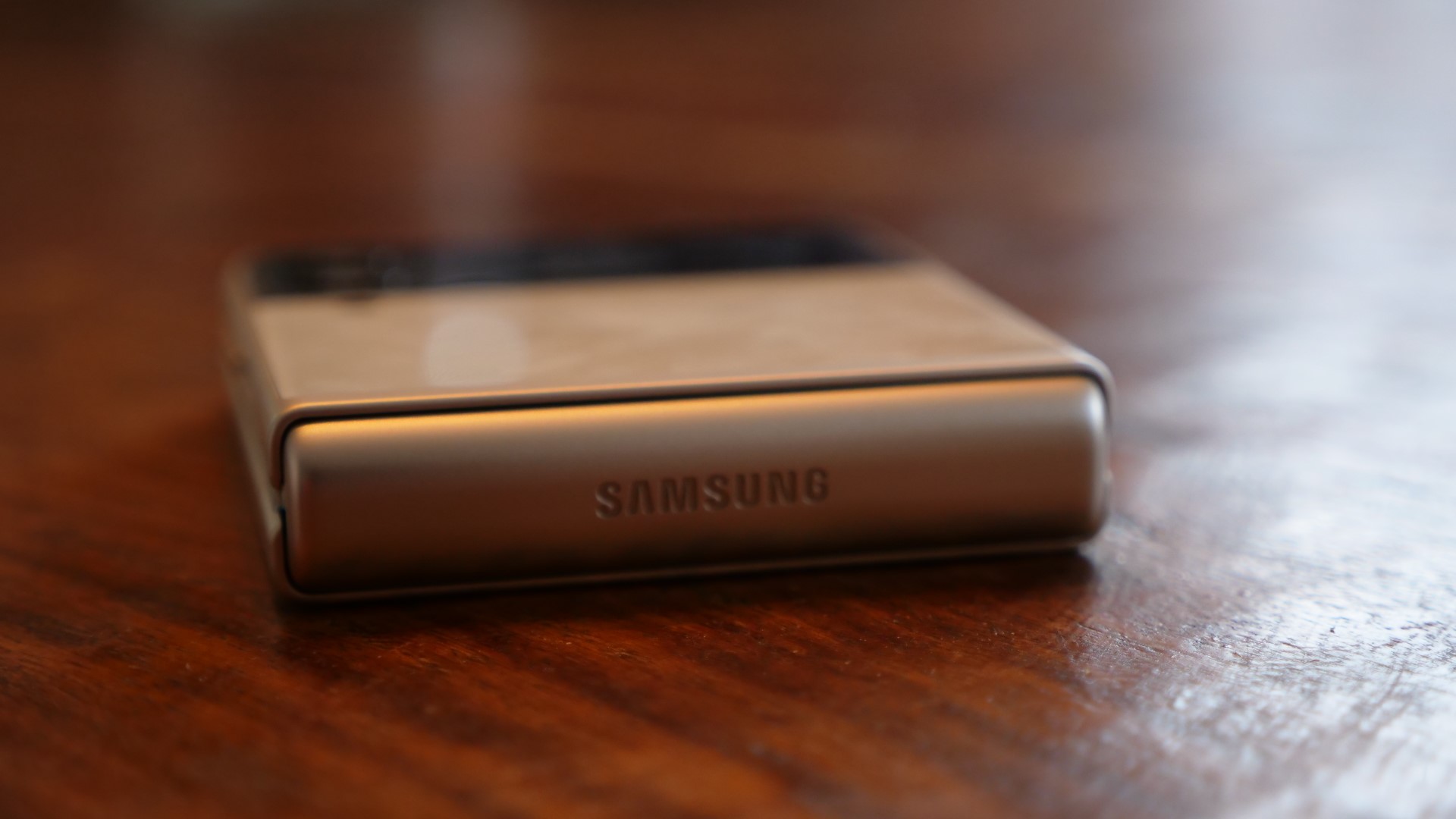
The rear camera array is now vertically aligned, just as it is on other Samsung flagships, and has eliminated the camera bump. The two lenses are housed in the top section of the phone alongside the cover display with the flash immediately below them.
The large 6.7-inch display makes this a tall phone when unfolded. At 6.5 x 2.8 x 0.27 inches, the Galaxy Z Flip 3 is as tall as the Galaxy S21 Ultra but narrower, thinner, and lighter at just 6.5 ounces. Looking at its direct competitors, the OnePlus 9 Pro (6.4 x 2.9 x 0.34, 7 ounces) is appreciably thicker and wider, the Samsung Galaxy S21 Plus (6.4 x 3 x 0.31-inches, 7.1 ounces) is wider, and the iPhone 12 Pro (5.8 x 2.8 x 0.29-inches, 6.7 ounces) with its 6.1-inch display is much shorter, but comes the closest in every other metric.
That size discussion, of course, ignores the primary selling point of the Galaxy Z Flip 3, which is its namesake ability to flip shut. It is just 3.4 x 2.8 x 0.63 inches in its folded state, which makes it more pocketable than any of the rest. I love that it makes it a perfect phone for exercise; trying to run with a Galaxy S21 Ultra is not an ideal experience. The Galaxy Z Flip 3 is a dream by comparison.
The Galaxy Z Flip 3 doesn’t so much reinvent the wheel from its predecessor as it moves from a wooden wheel to a rubber wheel, smoothing out the entire experience and making it more pleasant for everyday use.
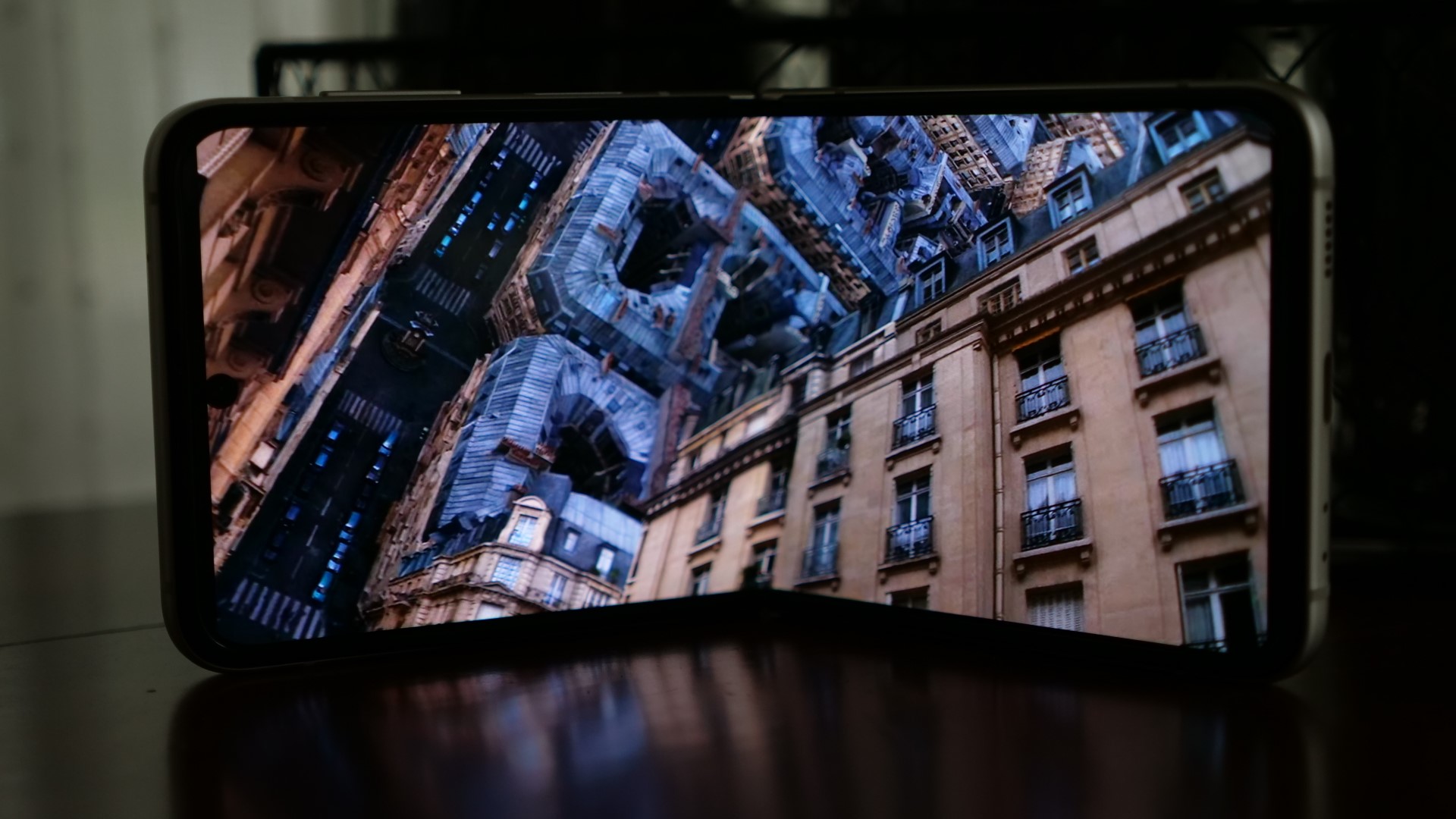
Samsung Galaxy Z Flip 3 display
The Samsung Galaxy Z Flip 3 features a 6.7-inch FHD+ (2640 x 1080) 120Hz Super AMOLED display. The upgraded 120Hz display looks fantastic but has unfortunate effects on battery life that I’ll address later.
Samsung reliably produces the best mobile displays on the market, and the Galaxy Z Flip 3 lives up to its traditional flagship counterparts in nearly every regard. Yes, the crease in the middle of the phone is still visible, but I find it less apparent than on the Galaxy Z Flip 5G. And after having used a mix of Samsung foldables over several weeks, I stopped noticing it over time.
I watched an episode of “Our Planet” on Netflix to get a taste of the HDR reproduction on the Samsung Galaxy Z Flip 3. The colors are exquisite; a scene with a bee escaping a flower shows off both the display’s crisp detail and wide color. I put it up side-by-side with the Galaxy Note 20 Ultra to compare, and the Galaxy Z Flip 3 seems to lose some of the subtlety of the Note 20 Ultra in favor of a brighter image. Still, this is more down to personal preference than objective superiority.
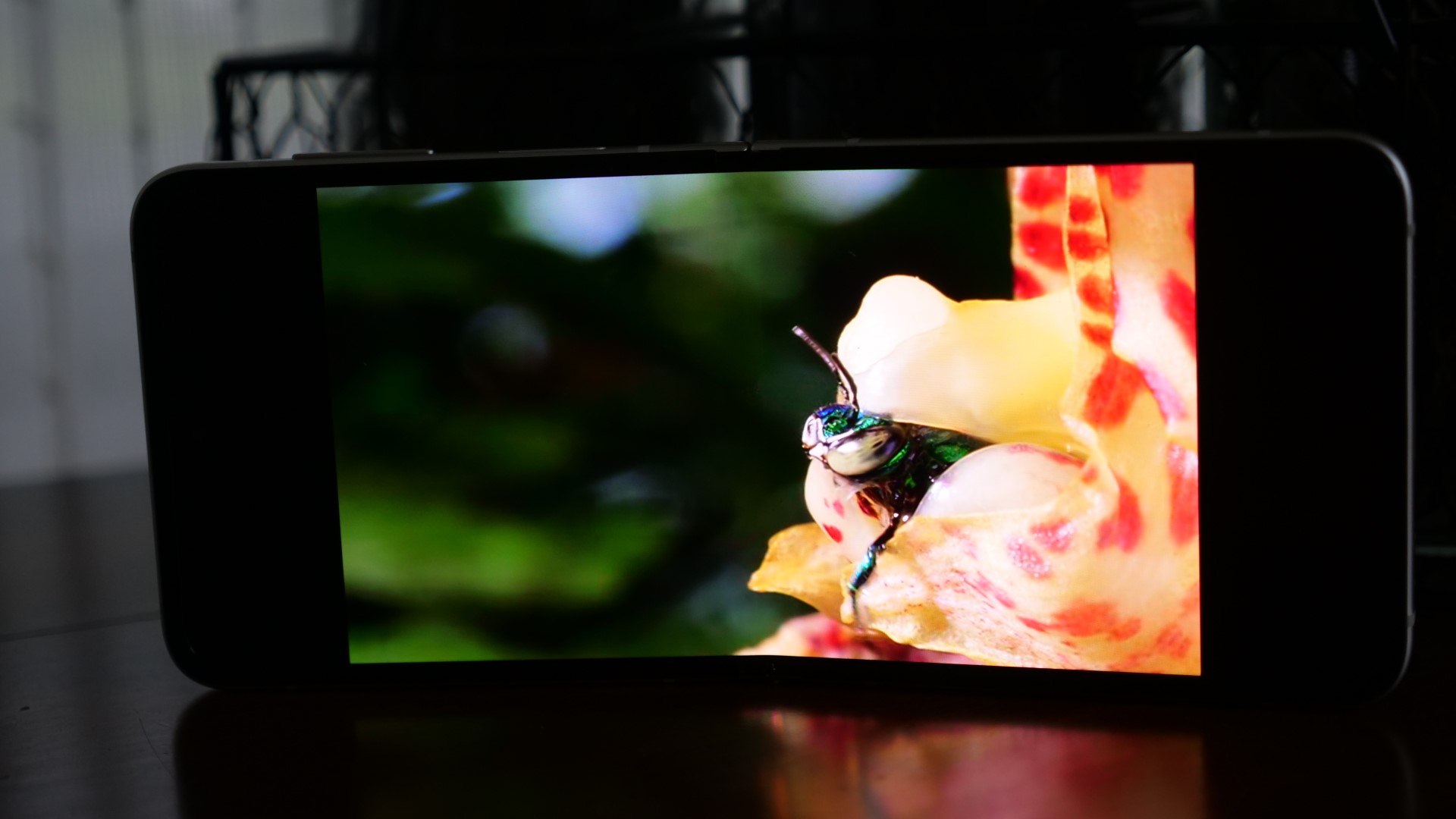
Our lab testing indicated that the display’s color reproduction in its Natural mode isn’t quite equal to some competitors. The Samsung Galaxy Z Flip 3 reproduced 76.4% of the DCI-P3 color gamut. That’s below the OnePlus 9 Pro (84.9%) and the iPhone 12 Pro (81.9%), only besting the Samsung Galaxy S21 Plus (73.5%). However, as with the Galaxy S21 Plus, if you want a more colorful image, just turn the display to “vivid” in display settings and expect something akin to the 150.4% on the Galaxy S21 Plus's vivid mode.
The Delta-E color accuracy test results (lower is better) were weaker for the Samsung Galaxy Z Flip 3, scoring a 0.32. That is far behind the OnePlus 9 Pro (0.20) and Samsung Galaxy S21 Plus (0.18), but only slightly bested by the iPhone 12 Pro (0.28).
Samsung Galaxy Z Flip 3 delivers impressive brightness, hitting a peak of 723 nits of brightness in our testing. That edges out the OnePlus 9 Pro (722 nits) by a single nit. However, the Galaxy S21 Plus (747) and the iPhone 12 Pro (743) come out on top in this one.
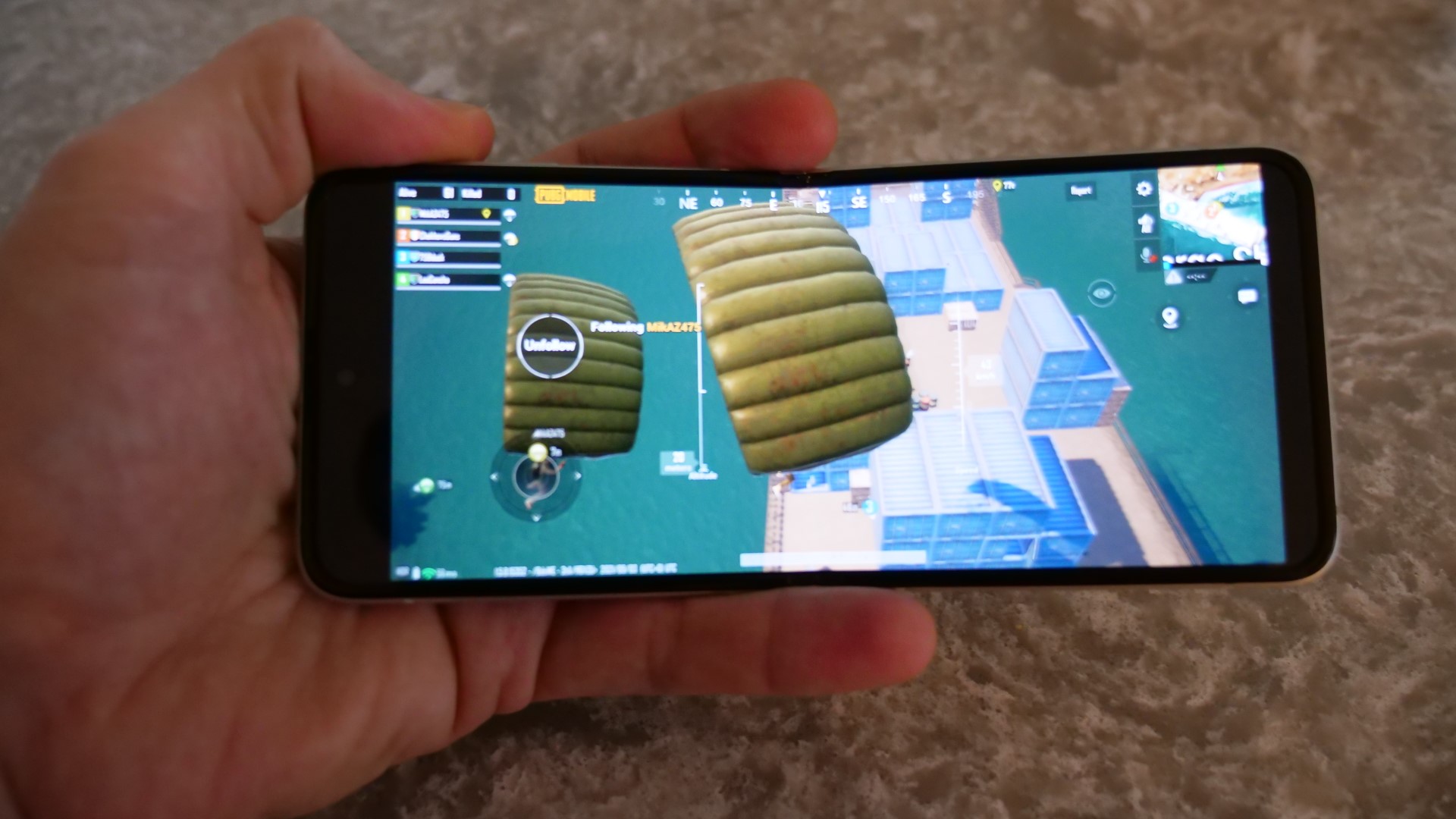
Samsung Galaxy Z Flip 3 performance
The Samsung Galaxy Z Flip 3 proves its flagship status here; the Qualcomm Snapdragon 888 remains the top processor in Android phones, and 8GB of RAM is enough, even if it’s not class-leading. The 128GB of storage will meet the needs of the vast majority of users, and if you are a heavy mobile photographer, you need a cloud backup solution anyway.
There’s no Android app or task the Snapdragon 888 can’t handle right now. I loaded up a couple of dozen Google Chrome tabs while running a YouTube video in the background without a dropped frame. Lightroom Mobile can be a tall task for any phone, and the Galaxy Z Flip 3 kept up with the fastest I’ve tested, mirroring the performance of the iPhone 12 Pro Max.
Gaming was a similarly flawless experience with the Galaxy Z Flip 3 capable of running PUBG Mobile at nearly maxed-out settings without slowing or stuttering. The resolution was the only setting I couldn’t push as the Galaxy Z Flip 3 doesn’t have a 4K display; otherwise, everything was topped out and running smoothly. The deserts of Karakin were as bright and unforgiving as ever.
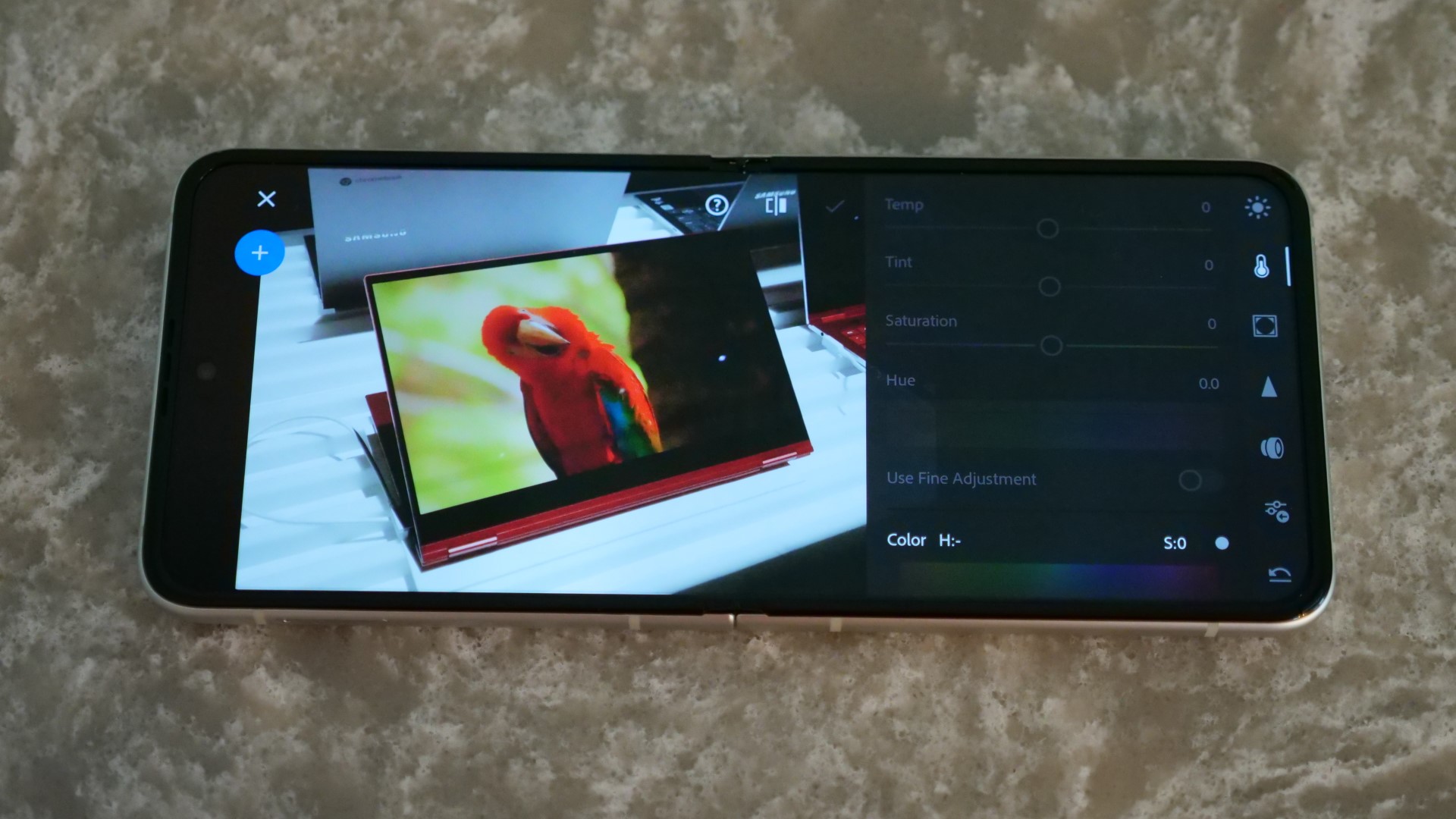
The Galaxy Z Flip 5G received a Geekbench 5 multi-core score of 2,984, backing up my observations with hard data. That’s a step down from its competitors' results. For example, the OnePlus 9 Pro (3,685), the Galaxy S21 Plus (3,300), and the iPhone 12 Pro (3,669) did better. However, in our series of tests, it scored above the Galaxy S21 Plus in three of the five, so it isn’t as behind as it might seem.
Graphics benchmarks offered similar results for the Samsung Galaxy Z Flip 3, coming in slightly below the top flagships. It delivered 27.3 frames per second in the Wild Life Unlimited 3DMark test. That’s behind the OnePlus 9 Pro (35 fps), the Galaxy S21 Plus (33 fps), and the iPhone 12 Pro (51 fps).
It’s disappointing to see the Galaxy Z Flip 3 not match its flagship peers on the benchmarks, but I didn’t notice a slowdown in day-to-day usage when tested side-by-side with those phones. This speaks to how overpowered current flagships are relative to most tasks we have for them. Regardless, while it did come in slightly behind its competitors, performance on the Galaxy Z Flip 3 is fast enough that you won’t have any complaints.
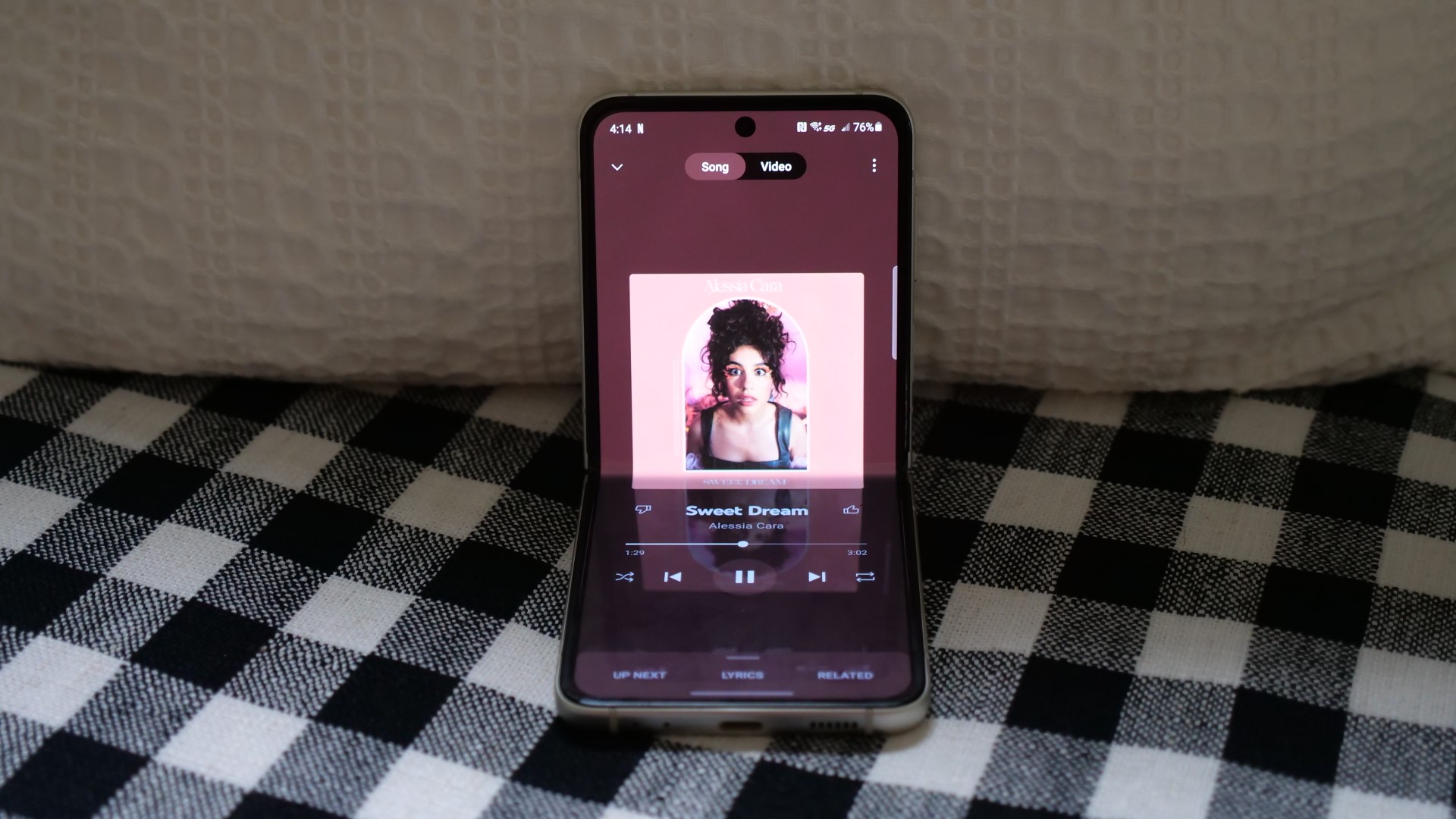
Samsung Galaxy Z Flip 3 audio
The Samsung Galaxy Z Flip 3 has stereo speakers located at the top and bottom of the phone. Like Samsung’s other flagship phones, the audio experience is excellent and the form factor of the Galaxy Z Flip 3 gives it a bit of an edge. With the phone slightly folded on its side, you can angle both speakers toward you for an optimal surround experience.
At full volume, it easily fills my 12 x 18-foot listening area. I listened to Alessia Cara’s “Sweet Dream,” and was surprised by the amount of bassy punch the speakers delivered during the brief reverberating percussive sections of the song. The aptly dreamy delivery of the lyrics also contained a richness that you only find in top-tier flagship phones.
A pair of wireless headphones will still deliver the best mobile audio experience, but more so than most, the Galaxy Z Flip 3 is adequate for an impromptu listening or watch session.
Samsung Galaxy Z Flip 3 battery life and charging
Battery life is the downfall of the Samsung Galaxy Z Flip 3 for some prospective buyers. It produced the worst score I’ve ever seen for a phone in our Laptop Mag battery test, lasting a mere 5 hours and 43 minutes. That isn’t shocking given its small 3,300 mAh battery and large 6.7-inch adaptive 120Hz display.
Switching to 60Hz helps, but not much. The 6 hours it achieved in that mode isn’t worth the tradeoff of a lower refresh rate. The test involves the phone continuously web surfing over cellular at 150 nits, a task the competition maintained for several additional hours. The OnePlus 9 Pro (11:44) more than doubled that result, the Samsung Galaxy S21 Plus (9:42) was well ahead alongside the notoriously short-lived iPhone 12 Pro (9:06). Even Apple’s pint-sized powerhouse, the iPhone 12 mini, fared better at 7 hours and 21 minutes.
But I think too much is being made of the battery life concerns on the Galaxy Z Flip 3. Power users who do a lot of gaming, capture photos and video, or are perpetually on social media, will find themselves topping up during the day. There’s no getting around the fact that this is a phone with otherwise flagship specs and a battery roughly a third smaller than what you find on rivals. I had no problem killing the battery on the Galaxy Z Flip 3 by 2 p.m. if I pushed it.
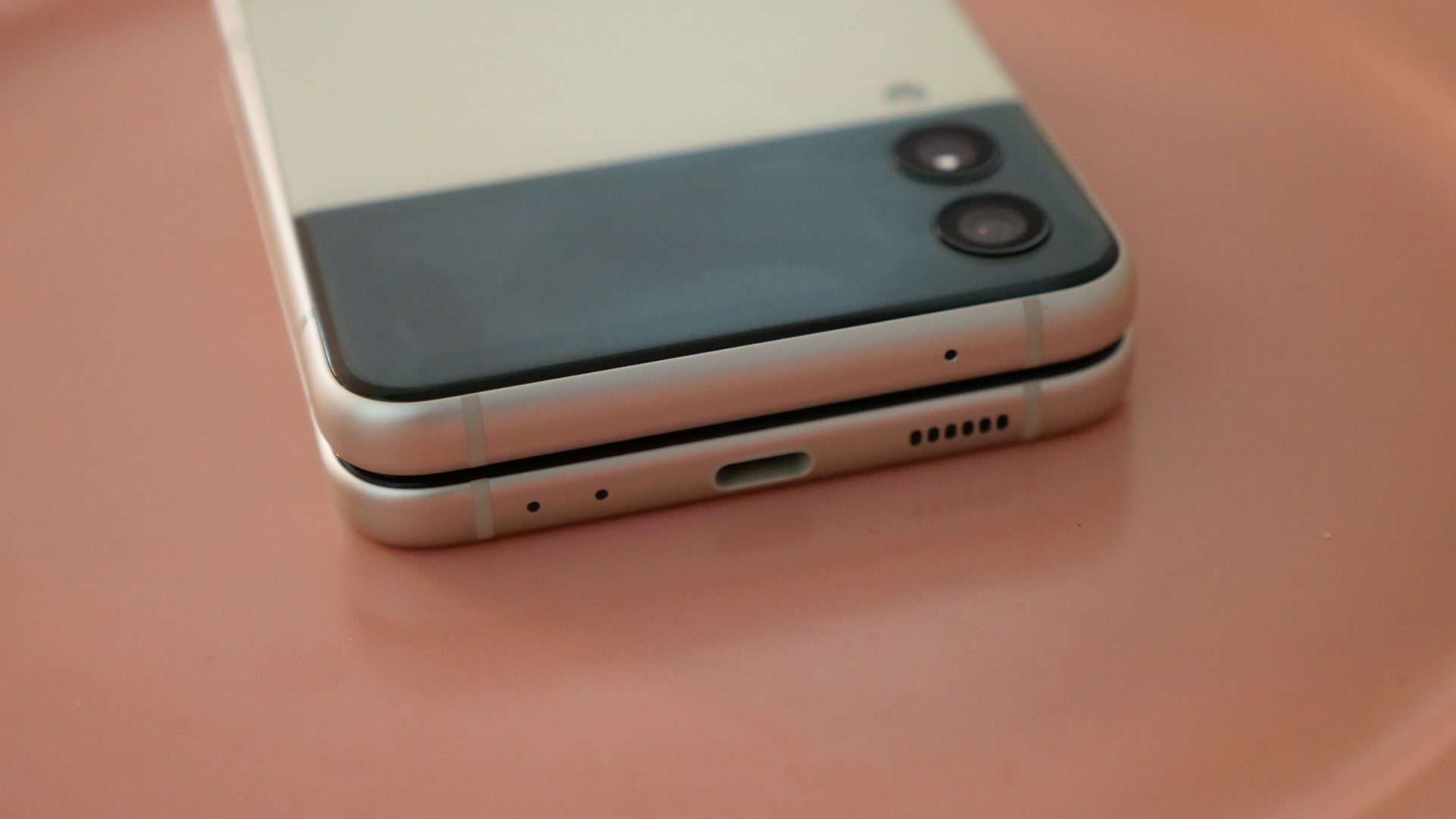
However, I also had no trouble making it through a full day on a charge when trying to simulate what I considered a more normal daily routine — going through my typical review day with a phone between 7:30 a.m. to 10:30 p.m. I just needed to cut back on some of my usual activities. I still ran Netflix and/or YouTube streaming on Wi-Fi for roughly 90 minutes, did some web browsing, used social media, gamed, and captured a few photos and videos. With relatively minor cuts to these activities, I could make it to the end of the day at about 10%, which, yes, is cutting it close. There’s always the built-in battery saver mode if you are hours away from charging up and need to buy some time.
I want to be clear: the battery life on the Galaxy Z Flip 3 is a problem if you want to use it as you would any other flagship; it just won’t hold up to that. You are making a tradeoff for this form factor, but if you aren’t someone who checks your phone every five minutes or are willing to curtail your mobile activities slightly, the battery life isn’t an insurmountable problem.
The small battery on the Galaxy Z Flip 3 means it charges relatively fast; it took 15 minutes to reach a 22% charge and 30 minutes to hit 44% in our testing. Samsung disappointingly still only supports 15W “fast charging” in the Galaxy Z Flip 3; I don’t expect the 65W of the OnePlus phones, but 20W or 25W would be nice. I appreciate the wireless charging support, a convenience I’m far too used to now.

Samsung Galaxy Z Flip 3 cameras
The Galaxy Z Flip 3 stray from the rest of Samsung’s flagships by offering only a two-camera setup. This includes a primary wide-angle 12MP at f/1.8 and a 12MP ultra-wide at f/2.2. I find a telephoto lens to be handy, but given the size and pricing constraints on the Galaxy Z Flip 3, I understand the decision to drop the zoom lens.
The good news is that the two lenses on hand are excellent. Samsung took a significant leap in the past year with its photo processing, and it shows with the Galaxy Z Flip 3. While not the raw power of the 108MP in the Galaxy S21 Ultra, the results from these lenses are fantastic.
Here’s a sampling of shots from the primary lens both at 1x and 2x zoom. The colors are outstanding with the bright yellow of the moss roses popping off the screen. I captured a pair of shots of my very tolerant chickens waiting for breakfast to show off the portrait mode from the primary lens. The detail is excellent in both, and you again see how far Samsung has come with its computational photography given the nearly perfect artificial bokeh in the portrait mode shot.

Samsung Galaxy Z Flip 3 wide-angle

Samsung Galaxy Z Flip 3 wide-angle - 4x zooom
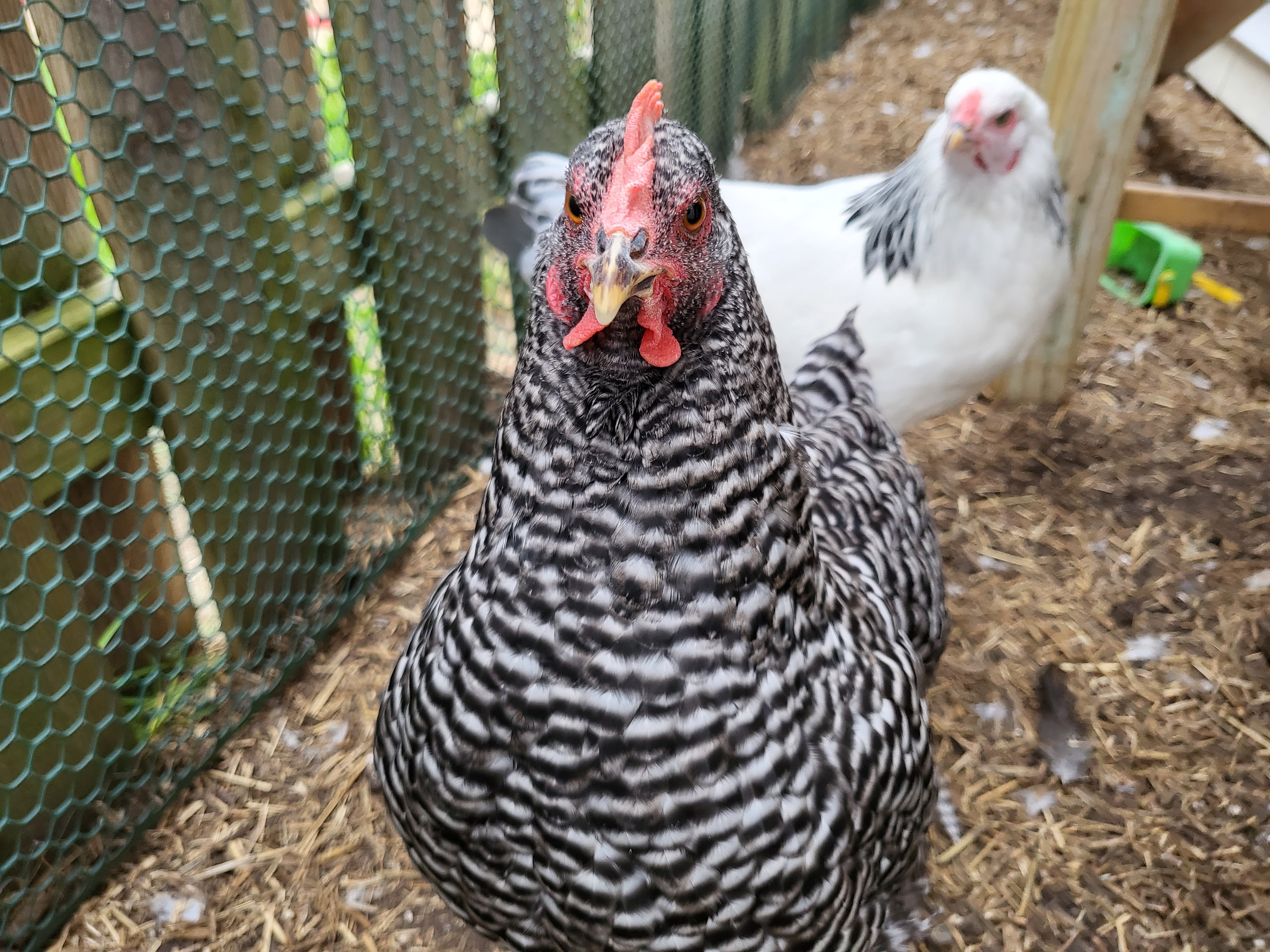
Samsung Galaxy Z Flip 3 wide-angle

Samsung Galaxy Z Flip 3 wide-angle portrait-mode

Samsung Galaxy Z Flip 3 wide-angle

Samsung Galaxy Z Flip 3 wide-angle - 4x zoom

Samsung Galaxy Z Flip 3 wide-angle

Samsung Galaxy Z Flip 3 wide-angle
The ultra-wide camera is no different; it mirrors the colors and detail of the primary lens effectively while avoiding the egregious edge distortion you sometimes see in ultra-wide photos. My oft-used example of the mural on a nearby restaurant shows this well with negligible distortion in the street lights and excellent color reproduction on the mural and the vibrant red building itself.

Samsung Galaxy Z Flip 3 ultra-wide

Samsung Galaxy Z Flip 3 ultra-wide

Samsung Galaxy Z Flip 3 ultra-wide

Samsung Galaxy Z Flip 3 ultra-wide
The front-facing hole-punch camera is a 10MP sensor with an f/2.4 aperture. Samsung does a nice job of balancing some slight enhancements to your selfies without leaving you with that over smoothed look that some phones insist on applying. The portrait mode is nearly as flawless as the rear camera except for it giving my hair a slight trim around the edges.

Samsung Galaxy Z Flip 3 front-facing camera portrait mode

Samsung Galaxy Z Flip 3 front-facing camera portrait mode

Samsung Galaxy Z Flip 3 front-facing camera wide-angle portrait mode

Samsung Galaxy Z Flip 3 front-facing camera wide-angle
As long as you are willing to live without a telephoto zoom, you will love the photos and video that you get from the Galaxy Z Flip 3.
Samsung Galaxy Z Flip 3 software
The Samsung Galaxy Z Flip 3 runs Android 11 with Samsung’s One UI 3.1. While I prefer the more stock Android experience of the Pixel line, One UI is easy to adjust to and offers several handy extras on top of Android. This is particularly true of the Galaxy Z Flip 3, which adopts a handful of features exclusive to Samsung’s foldables.
Chief among these are the Flex mode options. This is what allows you to have a split-screen experience in apps when you have the screen folded partially. The camera is a perfect example; the top section of the phone becomes the viewfinder while you have the shutter, mode and other controls available below. It also makes the Galaxy Z Flip 3 a dream device for video chatting; just set it down on a surface, angle the top of the phone, and it has a built-in stand.
There are rumblings that Google may finally push back with the Pixel 6, but for now, Samsung is still the leader for Android updates. Samsung offers three years of major OS updates and four years of security updates from the phone’s release. That’s an extra year of major OS updates compared to many other flagships and an extra year of security updates versus Google.
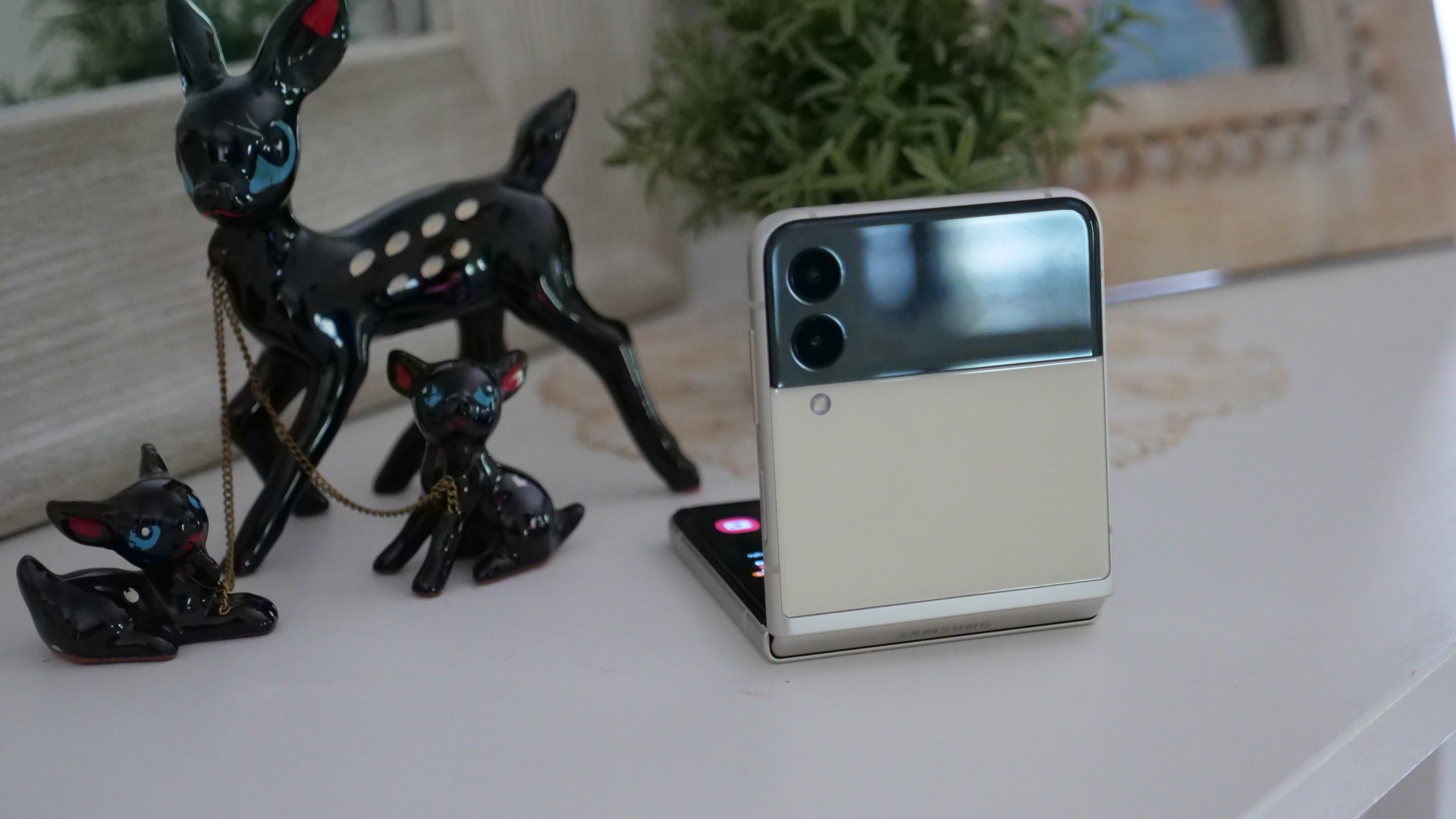
Bottom line
The Samsung Galaxy Z Flip 3 should be the phone that takes foldables mainstream. While the battery life will undoubtedly present problems for some users, it isn’t an insurmountable issue and is worth the trade-off if you want a full flagship experience that can fit in any pocket.
The Galaxy Z Flip 3 delivers what most people seemed to want from the iPhone 12 mini, an ultra-compact phone that doesn’t compromise on the flagship experience. The 6.7-inch, 120Hz display on the Galaxy Z Flip 3 is second to none; the cameras produce fantastic photos and videos; and the Snapdragon 888 chip should be fast enough to comfortably last you through the four years of security updates you get with the phone.
We haven’t reached the point where there are no sacrifices when opting for the foldable form factor, but the Galaxy Z Flip 3 gets very close. If you are willing to work around the short battery life, the Galaxy Z Flip 3 delivers a flagship phone experience unlike any other.
Sean Riley has been covering tech professionally for over a decade now. Most of that time was as a freelancer covering varied topics including phones, wearables, tablets, smart home devices, laptops, AR, VR, mobile payments, fintech, and more. Sean is the resident mobile expert at Laptop Mag, specializing in phones and wearables, you'll find plenty of news, reviews, how-to, and opinion pieces on these subjects from him here. But Laptop Mag has also proven a perfect fit for that broad range of interests with reviews and news on the latest laptops, VR games, and computer accessories along with coverage on everything from NFTs to cybersecurity and more.
